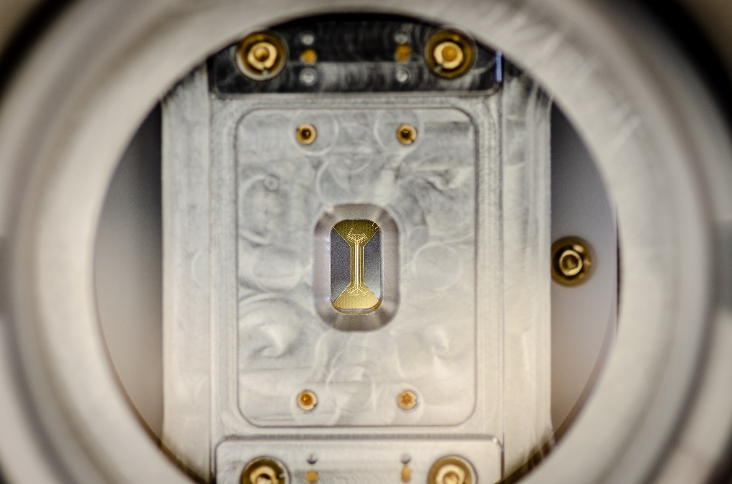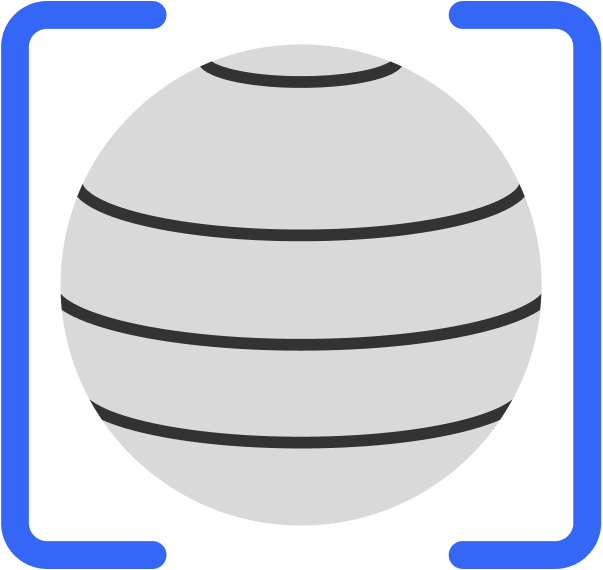IonQ
Overview
IonQ is a leader in quantum computing, offering some of the most useful and capable quantum computers in the industry. By making our quantum hardware accessible through Amazon Braket, we’re empowering organizations and developers to solve the world’s most complex problems in chemistry and materials simulation, logistics and optimization, pharmaceutical and security applications.
"Our trapped-ion technology is backed by decades of scientific progress, and we are excited that more customers than ever can access our ion-based computers through AWS to scale the use of this technology."
Peter Chapman, President and CEO of IonQ
“Our Algorithmic Qubits (#AQ) metric is designed to help our customers understand the results they should expect for a given application or workload, on a given IonQ QPU. It indicates the performance of the QPU against a common set of algorithms. IonQ is excited to offer Braket customers different quantum systems that perform at different #AQ levels, meaning you can find the right system for your needs.”
Jungsang Kim, Co-Founder & CTO of IonQ

"Our trapped-ion technology is backed by decades of scientific progress, and we are excited that more customers than ever can access our ion-based computers through AWS to scale the use of this technology."
Peter Chapman, President and CEO of IonQ
“Our Algorithmic Qubits (#AQ) metric is designed to help our customers understand the results they should expect for a given application or workload, on a given IonQ QPU. It indicates the performance of the QPU against a common set of algorithms. IonQ is excited to offer Braket customers different quantum systems that perform at different #AQ levels, meaning you can find the right system for your needs.”
Jungsang Kim, Co-Founder & CTO of IonQ
IonQ Trapped Ion Quantum Computing

Figure 1. Conceptual illustration of the acousto-optic modulator (AOM) guiding control and operations lasers to specific ions within the chain, enabling all-to-all connectivity.

Figure 2. A close-up of an ion trap mounted inside an IonQ QPU.

Figure 3. Superimposed chain of ions on an ion trap
Our quantum computers are powered by individual ions, trapped precisely in space, which we control with precise laser pulses to perform quantum gate operations and measurements. We feel this approach to building qubits, trapped ions, offers unique benefits to our customers which enable more value from quantum investments:

High gate fidelities - Nature has provided us with perfectly identical and naturally quantum systems in the form of the atoms all around us. By ionizing and isolating these naturally occurring quantum systems, IonQ is able to create highly stable and accurate qubits. This accuracy translates into some of the highest commercially available gate fidelities available today, including IonQ Aria that is available on Braket, which has a specified 2QG fidelity of 99.4%. See Aria’s latest performance data here. Since qubit gate operation error compounds through the depth of a quantum algorithm, even small errors can make results unusable. A more accurate gate set enables larger circuits, which is why IonQ has prioritized this capability from the very beginning.

All-to-all connectivity - Once the atomic qubits are trapped in precise 3D space within our computer, we use highly calibrated lasers to perform the gate operations, the state preparation and measurement. A benefit of this laser-based architecture is a high level of configurability that allows us to perform gate operations on any pair of qubits within the computer. This all-to-all connectivity graph provides unique benefits over other architectures that rely on nearest neighbor connectivity by reducing the swap gates needed to execute the entanglement required in a circuit which can lead to deeper circuits being run with measurable results.

Long coherence times - One of the largest challenges in quantum computing is dealing with the often fragile and sensitive quantum states of the qubits. Longer coherence times enable deeper circuits being run with measurable results. On average, IonQ Aria’s T1 coherence time (the amount of time we can determine the ‘zero’ or ‘one’ state of the qubit) is between 10 and 100 seconds, making it one of the longest coherence times in the industry. Aria’s T2 coherence time (the amount of time the more sensitive phase state of the qubit can be measured) is 1 second. Our current T1 and T2 coherence times can be found here.

Error mitigation - Finally, the combination of our low gate error rate and our long coherence times provides unique opportunities for applying error mitigation techniques to improve the quality and accuracy of quantum circuits. The long coherence times and stability of our qubits means that a large majority of our existing gate operation errors are coming from our own control systems. For example, take a common source of error in our system: a slight over-rotation of a qubit. With clever software techniques, this error can be countered and eliminated by slightly under rotating that qubit on the next operation to preserve the intended state of the qubit throughout the calculation. We are excited to offer our most effective error mitigation technique, Debiasing, to Braket customers to help drive even more performance from our systems for your quantum algorithms. Learn more about error mitigation on Aria here.
IonQ best practices
Most customers find that optimizing their circuits for trapped ion architectures delivers the best results. Visit the IonQ Best Practices webpage for information on IonQ system topology, gates, calibrations and best practices.